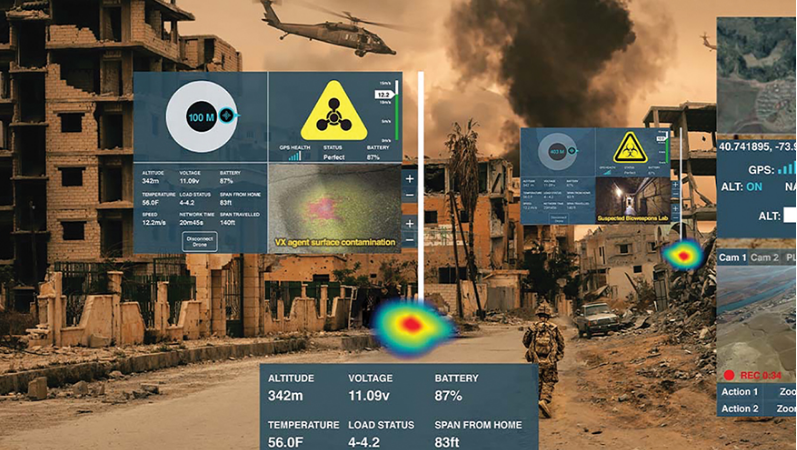
Augmented Reality Tech Maps Chem-Bio Threats – AREA
Teledyne FLIR announced it won a $15.7 million contract in December to develop augmented reality software that can pinpoint chemical, biological, radiological and nuclear, or CBRN, threats and map them for the military. The contract was awarded by the U.S. Defense Threat Reduction Agency’s Joint Science and Technology Office.
For reconnaissance and decontamination missions, a remotely operated vehicle would first move through an area where hazardous materials may be present and collect data using sensors, said Jeremy Walker, the director of science and technology for the company’s Pittsburgh location.
That data is then digitally registered and used to create an AR display of the area that highlights dangers, he added.
“As they’re moving through that space, they’re seeing these heat maps of where things were detected and what they are,” Walker said. “Once that data is captured by that tip of the spear reconnaissance mission, then many other subsequent users … can use that data to do their mission better.”
The mapping and AR technology will be integrated into the military’s Tactical Assault Kit suite of tools, which could be a mobile phone or tablet. Mixed reality headsets, like the Integrated Visual Augmentation System, are also an option, Walker said.
“All those people farther back don’t necessarily have to have sensors in their hand to know where the threat is to be able to do their work,” he said. “You’ve got this tool that helps people intuitively interact with it so they can keep their hands free to do other things.”
As it develop the technology, Teledyne FLIR’s Pittsburgh lab will be looking to work with existing and new partners in augmented reality and 3D-mapping spheres to help build the software, he said.
This content was originally published here.


